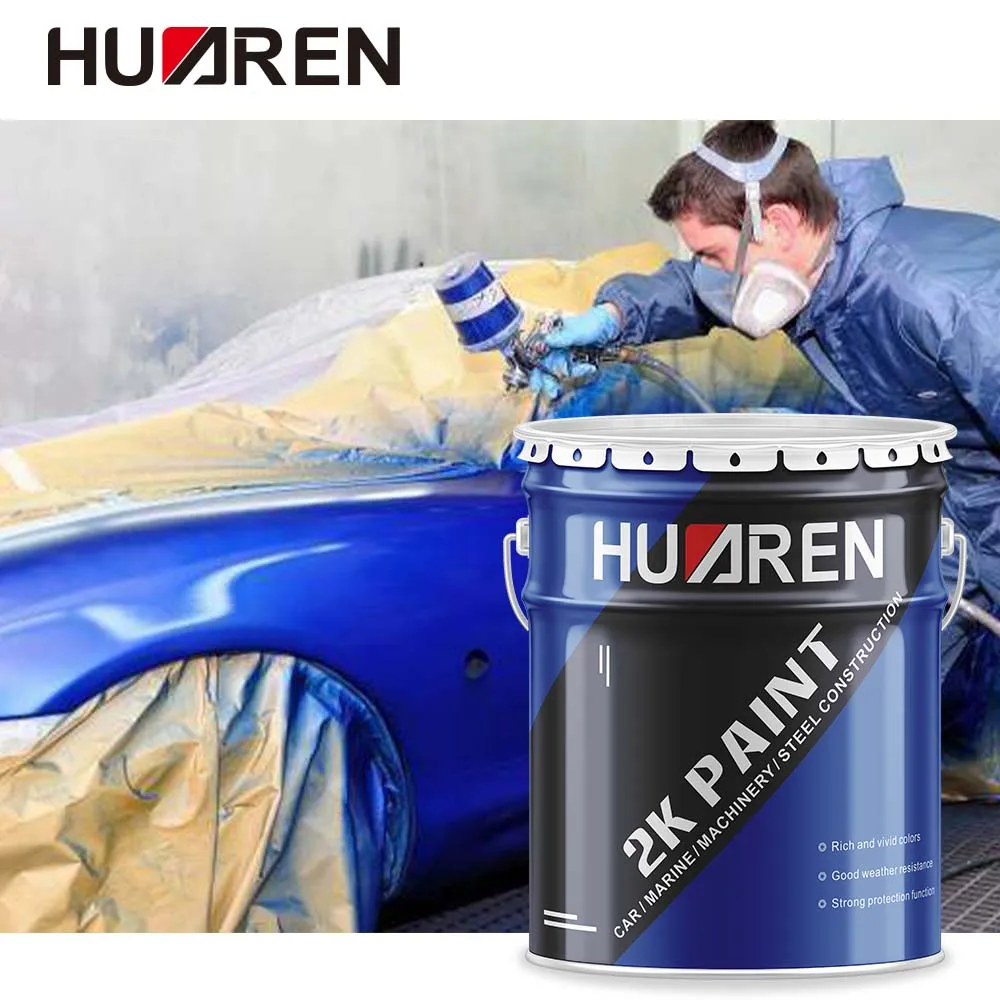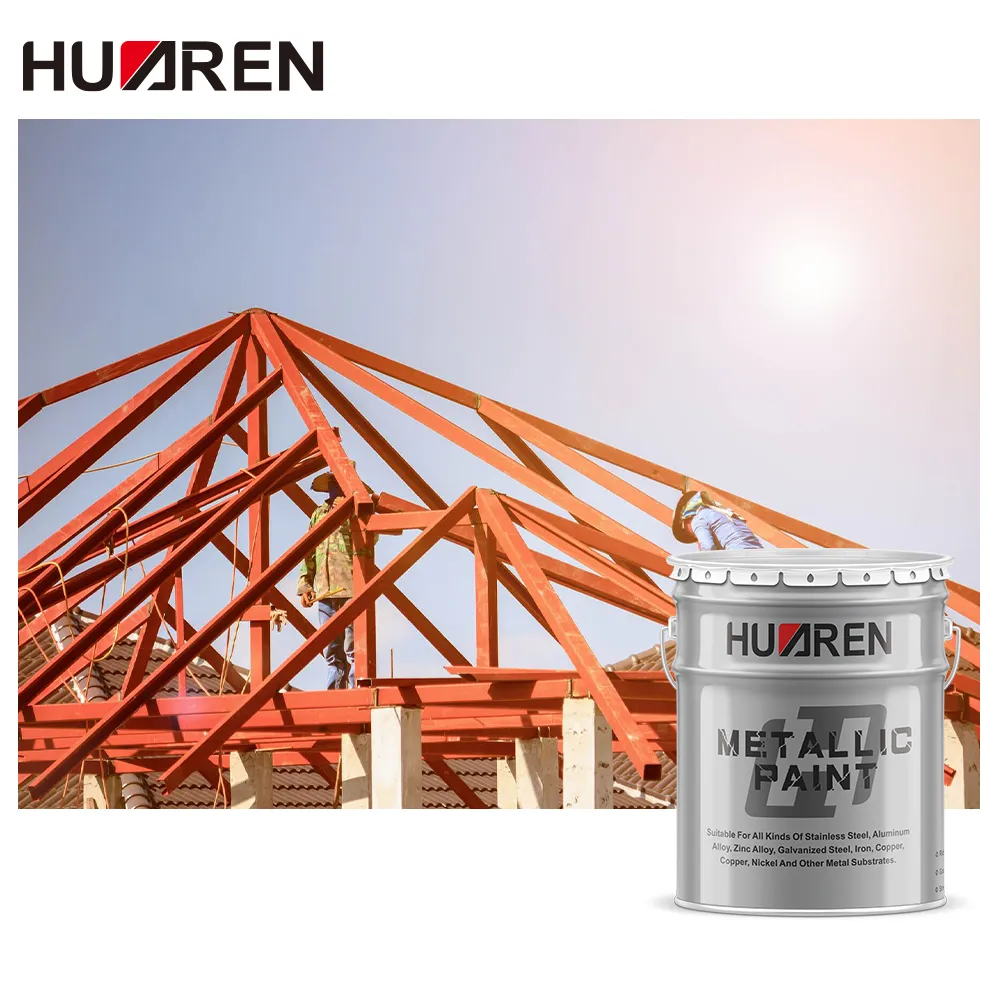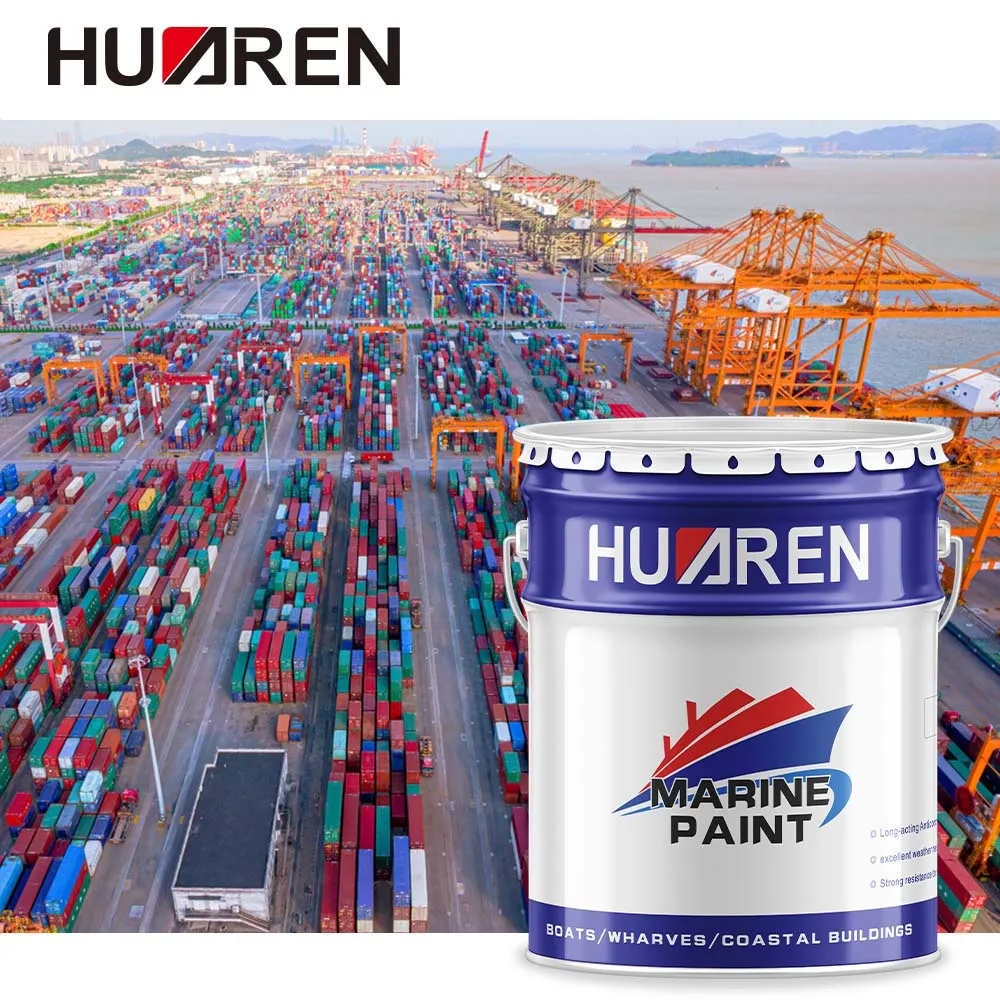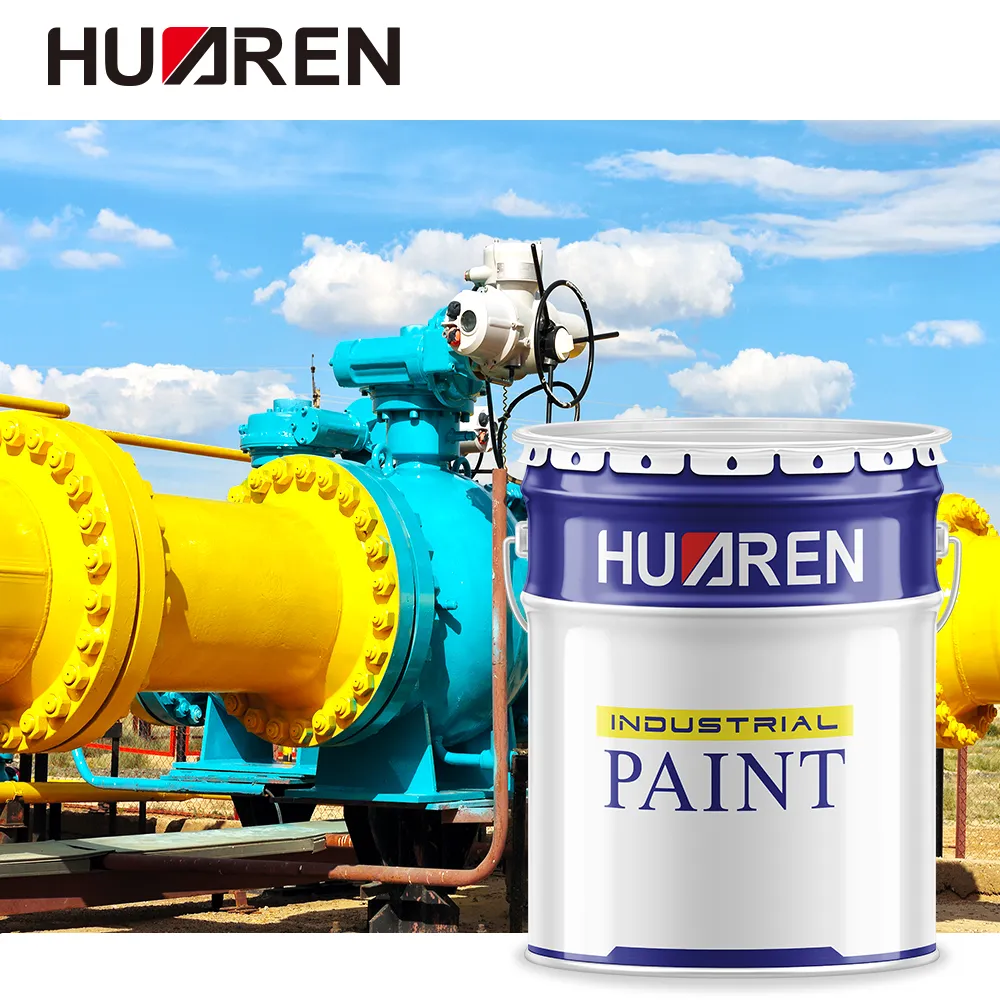As an indispensable part of modern industrial production, industrial paint is widely used in the surface coating of various facilities, equipment and infrastructure. Its function is not limited to aesthetic decoration, but also provides important protection for various materials to a large extent. Unlike general household paint, industrial paint has higher performance requirements and usually needs to have corrosion resistance, wear resistance, UV resistance, waterproofness, and chemical resistance. Therefore, industrial paint plays an important role in many industries and fields.
This article will discuss in detail the specific uses of industrial paint and its application scenarios in different fields.

What is the role of industrial paint?
The main functions of industrial paint are divided into two categories: protective function and decorative function. In industrial environments, equipment and infrastructure are often exposed to various harsh conditions, including corrosive chemicals, high humidity, high or low temperatures, mechanical damage, etc. In order to extend the service life of equipment, industrial paint forms a solid protective film to isolate the material from the external environment.
Protective function:
Industrial paint can effectively prevent metal, wood, concrete and other materials from corrosion, wear and aging in harsh environments. For example, steel exposed to humid air will quickly rust if not protected. Industrial paint, on the other hand, prevents rust by isolating corrosive factors such as oxygen and moisture.
Decorative function:
Although industrial paint is mainly used for protection, in many industries, the decorative function of paint is equally important. The aesthetics of industrial facilities and equipment not only affects the corporate image, but also can achieve the function of safety identification through different colors of paint. For example, the piping system in a chemical plant usually uses different colors of paint to distinguish the categories of gas, liquid or chemicals to ensure the safety of operators.

What are the main types of industrial paint?
Industrial paint can be divided into many types according to different uses and usage environments. Each paint has its unique role in specific industrial applications. Common industrial paints include:
Anti-corrosion paint Anti-corrosion paint is the most common type of industrial paint and is widely used on the surface of materials that are susceptible to corrosion, such as metals and concrete. Its main function is to prevent moisture, salt spray, acid and alkali from corroding the material, especially for marine environments, chemical equipment and storage tanks. Anticorrosive paints are usually divided into primers and topcoats. Primers have good adhesion and anticorrosive properties, while topcoats provide further protection and aesthetic effects.
High temperature resistant paints
High temperature resistant paints are designed for high temperature environments and can remain stable at temperatures above 200°C without cracking, discoloration or peeling. This type of paint is often used on the surfaces of equipment that need to work at high temperatures for a long time, such as chimneys, boilers, and engine casings.
Fire retardant paints
Fire retardant paints play an important role in construction, petrochemical industries, and other high-risk environments by forming a flame retardant film to slow the spread of fire. When the temperature rises, fire retardant paints will expand and form an insulating layer, thereby reducing the damage of flames to the underlying material.
Chemical resistant paints
Equipment and facilities in the chemical industry are often exposed to corrosive chemicals such as strong acids and alkalis. Chemical resistant paints can resist the erosion of these chemicals and are widely used on storage tanks, pipelines, and chemical equipment surfaces.
Anti-slip paints
Anti-slip paints are usually used in areas that are prone to slipping, such as floors or steps. By adding specific particulate materials, this paint can increase the friction of the surface and reduce the risk of workers slipping. It is widely used in factories, docks, bridges and other places.

What are the uses of industrial paint?
The uses of industrial paint are very wide, involving almost all manufacturing and infrastructure fields. The following are the application scenarios of industrial paint in some typical industries:
Manufacturing
In the manufacturing industry, equipment and machinery are often in high-intensity working conditions, and the surface is easily worn or corroded due to frequent use. Industrial paint can not only extend the service life of equipment, but also improve the appearance quality of equipment. For example, in the automobile manufacturing industry, both the chassis and the body shell of the car need to undergo a strict coating process to ensure that the car can maintain durability in a complex environment.
Construction and infrastructure
In the construction industry, reinforced concrete structures are widely used, and these materials are exposed to the air for a long time, especially in coastal areas or areas with frequent acid rain, and are susceptible to corrosion. By using anti-corrosion paint, the external steel components of buildings and facilities such as bridges can be protected for a long time. In addition, fire-retardant paint is also indispensable in areas such as tunnels and underground garages to prevent the spread of fire.
Petrochemicals
Equipment and pipelines in the petrochemical industry are often exposed to highly corrosive environments such as salt water, chemicals and high-temperature gases. These equipment not only require anti-corrosion paints, but also special coatings that are resistant to high temperatures and chemicals to ensure their long-term stable operation. Oil storage tanks, refining equipment, chemical reaction towers, etc. are typical application objects of industrial paint.
Marine Engineering
Ship and marine engineering equipment are exposed to high humidity and high salt environments, and are prone to rust. Therefore, special anti-corrosion paints and anti-fouling paints are usually required on the hull, deck, bilge and other parts of the ship to resist seawater corrosion and marine organism attachment. Such paints can not only improve the durability of the ship, but also reduce maintenance costs.
Energy Industry
The energy industry includes thermal power plants, hydropower stations, nuclear power plants, etc. The equipment of these facilities is exposed to high temperature, high pressure or corrosive media all year round. Industrial paint can provide a protective barrier for these equipment to prevent corrosion, wear and thermal damage, and ensure the stable operation of the equipment. Especially in wind power generation facilities, the painting requirements of wind turbines are very strict, and high temperature resistant and anti-corrosion paints are required for coating protection.
Transportation infrastructure
Transportation facilities such as bridges, railways, and highway guardrails are exposed to the outdoors for a long time, and are susceptible to rust and damage due to the erosion of weather, salt spray, and pollutants. By using industrial paints with strong corrosion and weather resistance, the life of these facilities can be greatly extended and the maintenance frequency can be reduced. In addition, anti-slip paints are often used on the ground such as airport runways and subway platforms to improve safety.
How to apply and maintain industrial paint?
The application and maintenance of industrial paint are closely related to its use. In order to ensure the protective effect and service life of the paint, the following points should be noted during application:
Surface treatment:
Before painting, the surface must be thoroughly cleaned and treated to remove rust, grease, and other impurities. The quality of surface treatment directly affects the adhesion and protective performance of the paint. Common surface treatment methods include sandblasting, grinding, and chemical cleaning.
Choosing the right primer and topcoat:
The selection of primer and topcoat should be determined according to the specific environmental conditions and usage requirements. Primers usually play a role in enhancing adhesion and preliminary corrosion protection, while topcoats provide final protection and aesthetic effects.
Painting technology:
Industrial paint can be painted by brushing, rolling, spraying, etc. For large equipment or complex structures, spraying is usually used to ensure uniform coating without dead corners.
Regular maintenance:
Although industrial paint has a long service life, the coating may be worn or peeled off over time. Regular inspection and maintenance can detect and repair damage in time, extending the service life of the equipment.

Is industrial paint environmentally friendly?
Although industrial paint plays an important role in protecting equipment and facilities, environmental issues in its production and use cannot be ignored. Traditional industrial paint often contains a large amount of volatile organic compounds (VOCs), which evaporate into the air during use, posing a potential threat to the environment and human health. For this reason, more and more environmentally friendly industrial paints have emerged, such as water-based paints, low-VOC paints, etc. This type of environmentally friendly paint reduces the emission of harmful substances while ensuring performance, meeting modern environmental protection requirements.
Why choose Huaren Chemical Industry Co., Ltd. as your supplier?
As a trusted supplier in the global market, Huaren Chemical Industry Co., Ltd. provides top-tier industrial paints, including floor paints, phenolic paints, water-based industrial paints, and more. We offer wholesale prices and high-quality products suitable for various industries like petrochemical, shipbuilding, machinery, and construction. With a capacity of over 20,000 tons annually, we can handle large-scale purchasing needs. Contact us today for a customized quote and to explore our low-cost options.

